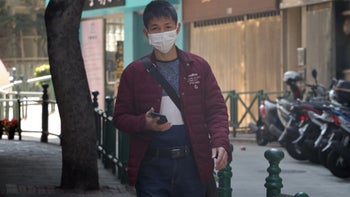COVID-19 makes strange bedfellows as Apple and Google team up for contact tracking system

The seriousness of the pandemic that we all have been fighting against has brought together two tech giants, Apple and Google. Both announced today that they are using Bluetooth Low Energy (BLE) technology to help reduce the spread of coronavirus. Starting next month, both companies will release APIs that allow both iOS and Android devices to run apps from public health authorities. These apps will be downloaded from either the Apple App Store and the Google Play Store.
During the second phase of this partnership, Apple and Google will build a Bluetooth-based platform that will be included with the iOS and Android operating systems; this will allow more people to opt-in and participate if they so desire. The plan is for these health organizations to disseminate apps to as many smartphone users as possible. Anyone who opts-in will be able to indicate on one of these apps whether he/she has been diagnosed with coronavirus. If so, an app will alert others who were in the vicinity of this person that they were near someone who tested positive for coronavirus.

How the Apple/Google Bluetooth technology will work to provide contact tracking of COVID-19 exposure
The process, known as contact tracking, can go a long way toward reducing the spread of the disease. And precautions will prevent the system from learning the exact location of those involved; instead, the system will track signals from nearby phones every five-minutes and store the connection in a database. If a few days later one of the parties tests positive for coronavirus, they can notify the app that they have been affected and all of the people listed in the database can be alerted.

Here is a logo you don't see every day
It has taken a global pandemic for Google and Apple to get together and use their technology for the public good. In a joint statement, the two companies said, "All of us at Apple and Google believe there has never been a more important moment to work together to solve one of the world’s most pressing problems. Through close cooperation and collaboration with developers, governments and public health providers, we hope to harness the power of technology to help countries around the world slow the spread of COVID-19 and accelerate the return of everyday life."










Things that are NOT allowed: